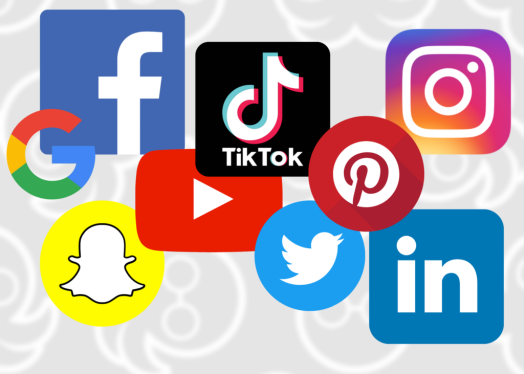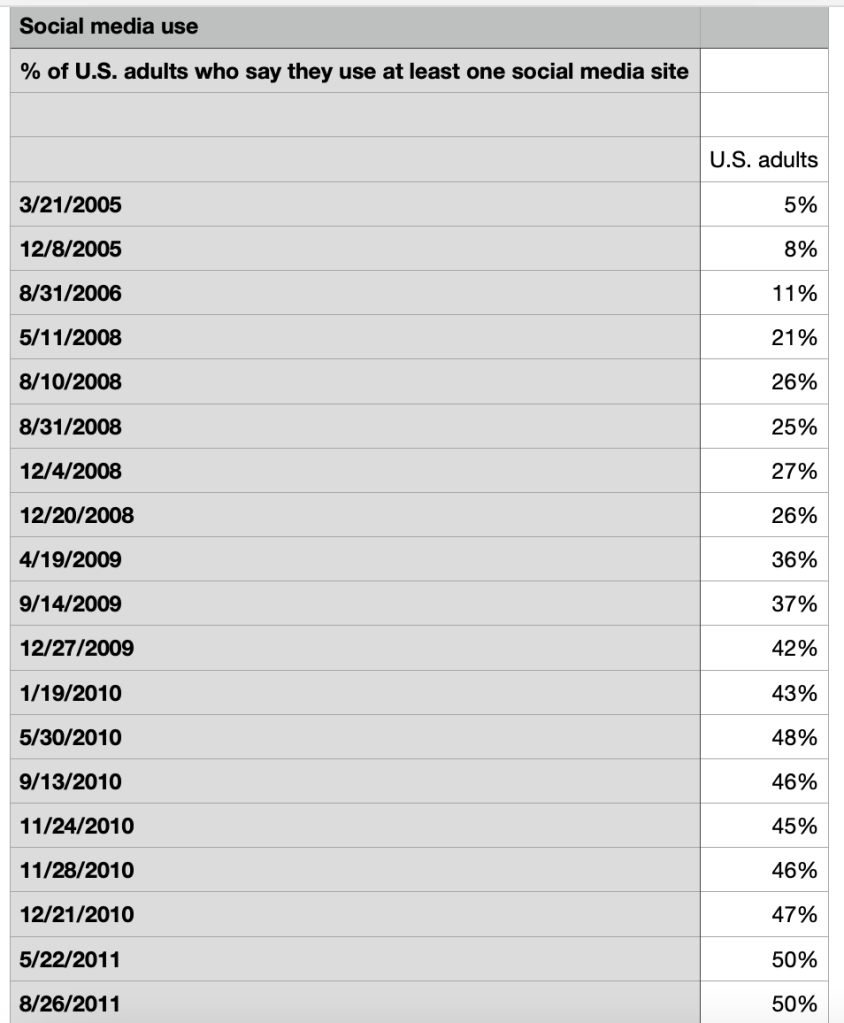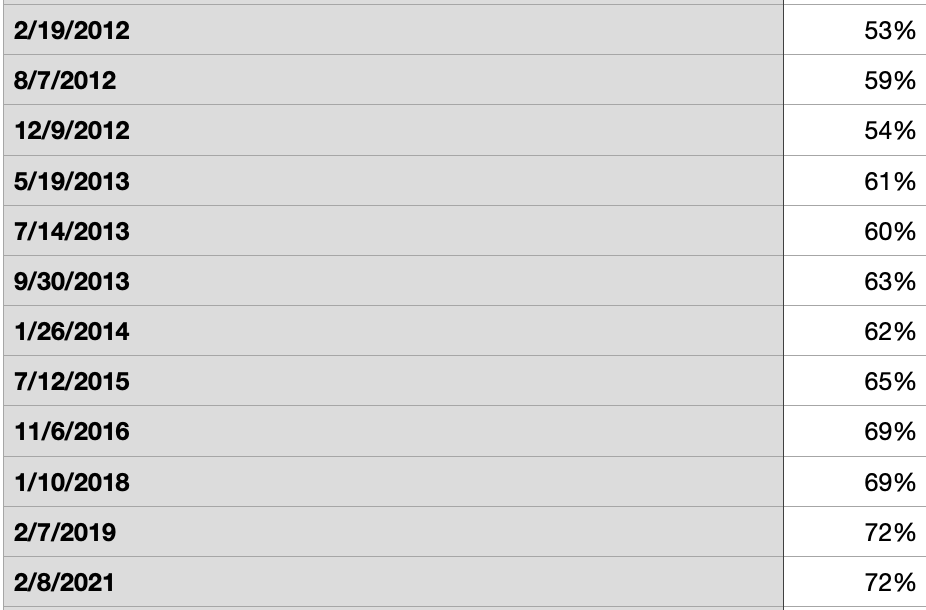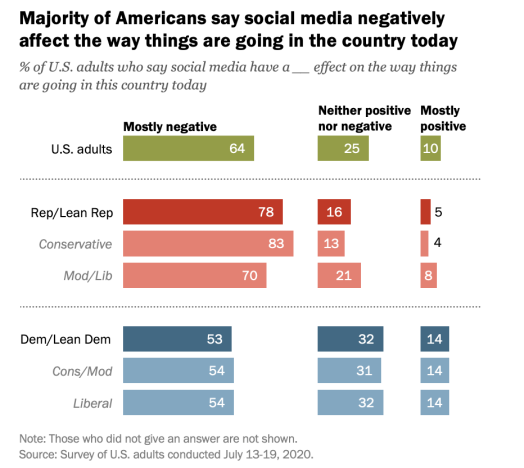How Long Will IT Take To Identify the Elephant in the Room

Did social media change your attitude? (Twitter, Facebook, Tik Tok)
Research of the facts:
How are your emotions affected regarding your mental state by seeing others’ responses? If you were to define the value and use of social media what would the majority of the world see the platform being used to achieve? Is it possible for social media to influence others to change their views or attitudes? Below gives you an in-depth view of the growth of how social media may change our lives. What does this mean for you and our youth? A true revolution of information doesn’t mean it is true or false.


This growth trend exemplifies outcomes we may not be proud of in our societies using or misusing this tool. This is a composite look at how our public has accepted social media and found a new influencer associated with potential power.
64% of Americans say social media have a mostly negative effect on the way things are going in the U.S. today.
Knowing these facts you may ask yourself, “What can I do about this world wide reality?”
In a Pew Research Study in 2020, American participants in a study reported only one in ten people felt social media had a positive effect on the way things are going. In addition, one-quarter surveyed felt they didn’t have a positive or negative effect.

Just by looking at the grave differences in outcomes of negative and positive, we can see a chasm of difference in the perception of how social media is reported. A point to consider here is the research on how much our local and national news is positive or negative.

By reviewing these results it is possible to have answers to what societal values are being constructed by the social media presented to the masses. In comparison to the total number of people being affected by social media, we must ask how often do they turn to this medium?

I ask you, how much influence this medium may have on the future of society. Knowing that it could be possible to have positive effects the actual findings show most users see a different story.

Young adults were among the earliest social media adopters and continue to use these sites at high levels, but usage by older adults has increased in recent years. As society continues to adapt to a technology age there have become new avenues of information opportunities through social media. The new caveat to information is being capable of deciphering what is true and what is false.
Technology has adjusted our youth’s dependence on automation technology to satisfy their psyche. Our ability to implement a new facet of our young people’s lives has been somewhat of a failure. By the research statistics, our youth have been vandalized of their innocence by a culprit mentality by taking advantage of their needs. During the past two decades, social media has offered our society a double-edged sword. Young people have turned to substitute entertainment, to relieve boredom, and stay in touch with friends electronically, which has had physiological effects on their brains that have effects on dopaminergic pathways connecting directly with mental health.
Per a recent Pew Research Center (2021), 82 percent of American adults 30 years and younger use some type of social media. How are these people using social media?
- social interaction
- information seeking
- entertainment
- relaxation
- fear of missing out
The time has come when we need to understand the pros and cons of social media and subscribe to educating ourselves on how to better prepare our future generations to utilize the medium productively. In comparison, social media like alcohol or drugs can deter dopaminergic pathways more quickly and reliably than naturally derived awards such as studying hard and getting good grades. Instant dopamine rush is as addictive as drugs or alcohol. This rush may cause depression, anxiety, and other mental illness. Signs of compulsive social media use include preoccupation, spending increased time on social media, as well as restlessness, sadness, or anxiety when attempting to control social media use.
Parents today can relate to the days when it was difficult to get their children to come in at night into the house. Where today it is difficult to get their children away from social media.
Steps to be taken:
- Recognize there is a problem
- What is excessive use and make a plan to curb usage
- Teach self-corrective behavior by using apps that measure the use
- Take the most used apps and place them in a folder
- Time limits
- Changing from color to black and white on a smartphone
More time spent on social media can lead to cyberbullying, social anxiety, depression, and exposure to content that is not age appropriate. Social Media is addicting. When you’re playing a game or accomplishing a task, you seek to do it as well as you can.
Please be cognizant and not leary of the actual impact social media has had on your life and society. Social Media is a double-edged sword where it can be beneficial but also can be effective in propagandizing people of all ages. Social Media is not going away but society will need to be more conscious of what is fact and what is opinion. This medium of communication has had a negative influence on our youth and young adults. Awareness by each of us and our families is the way to full comprehension of the ills that may accompany social media.
Stay in tune with your own usage and family. Look for the truth and not an opinion created with no facts. All the uproar can be stifled if you can be smarter than the false information that may be coming your way.
We all need a brighter future that is created by the people who look for the truth.
Our own search for news and media from the masses excels the producers of media by recognizing the need for a rational thought process to not be affected immediately as a judge and jury. Our young people age 30 and younger have experienced confusion. Leadership and governing groups add to the confusion which is often substantiated as truth through social media. Life is not complicated but how we treat it makes it that way.
After volunteering for the past ten years with the homeless, incarcerated, drug addicts, gangs, broken homes, absentee fathers, and alcoholics has provided our mentors with the clarity and simplicity of what is important in life. There is a guarantee on average we spend 15 years as a child, 20years in bed, another 30 years at work and by knowing this possibility how can you not allow negativity to become part of any of these years? It is important you have a plan for your life for life is short.
